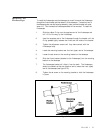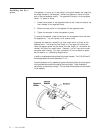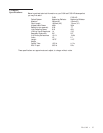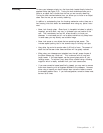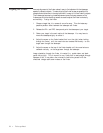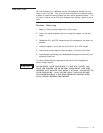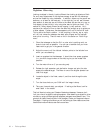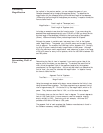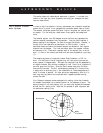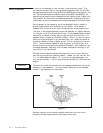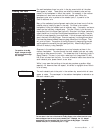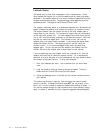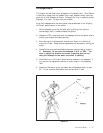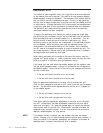
Telescope Basics • 31
As implied in the previous section, you can change the power of your
Celestron telescope just by changing the eyepiece (ocular). To determine the
magnification for your telescope, simply divide the focal length of the telescope
(1000mm) by the focal length of the eyepiece you are using. In equation format, the
formula looks like this:
Focal Length of Telescope (mm)
Magnification = —————————————————
Focal Length of Eyepiece (mm)
Let’s take an example to see how this formula works. If you were using the
standard 20mm eyepiece supplied with your C150-HD or G-8N, you simply divide
the focal length of the telescope (1000mm) by the focal length of the eyepiece
(20mm). 1000mm divided by 20mm yields a magnification of 50 power.
Although the power is variable, each instrument has a limit to the highest
useful magnification. The general rule is that 60 power can be used for every
inch of aperture. For example, the G-8N has a mirror diameter of 8". Multiply-
ing 8 by 60 gives a maximum useful magnification of 480 power. Although
this is the maximum useful magnification, most observing is done in the range
of 20 to 35 power for every inch of aperture, which for the G-8N is between 160
and 280 power.
Determining the field of view is important if you want to get an idea of the
angular size of the object you are observing. To calculate the actual field of
view, divide the apparent field of the eyepiece (supplied by the eyepiece
manufacturer) by the magnification. As you can see, before you determine the
field of view, you must first calculate the magnification. In equation format,
the formula looks like this:
Apparent Field of Eyepiece
True Field = ———————————————
Magnification
Using the example we started with above, we can determine the field of view
using the same 20mm eyepiece. The 20mm eyepiece has an apparent field of
view of approximately 52°. Divide the 52° by the magnification, which is 50
power. This yields an actual field of 1.04°, or a little more than a degree.
This formula gives you the true field of view in degrees. To convert degrees to
feet at 1,000 yards, which is more commonly used for terrestrial viewing,
simply multiply by 52.5. Continuing with our example, 1.04 times 52.5
produces a field size of 55 feet at 1,000 yards.
The apparent field of each eyepiece that Celestron manufactures is found in
the Celestron accessory catalog (#93685).
Calculating
Magnification
Determining Field of
View



